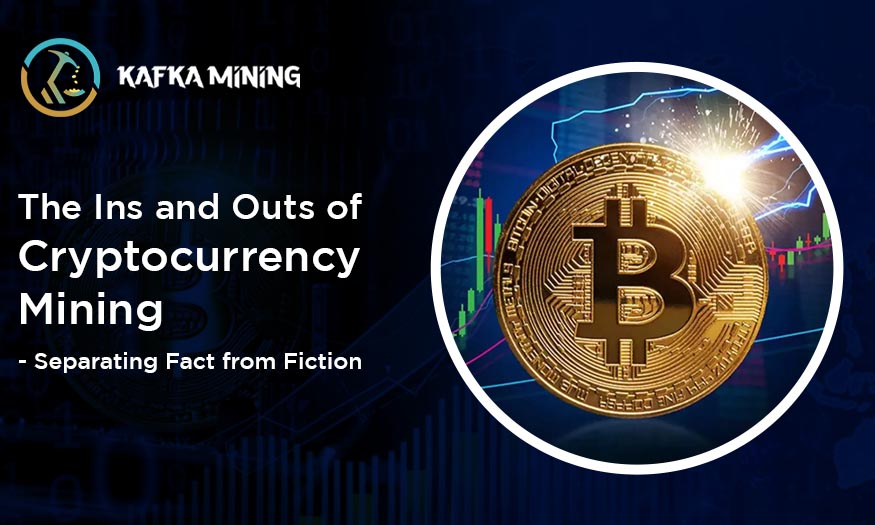
Cryptocurrency mining has been a hot topic in recent years, with the rise of digital currencies like Bitcoin, Ethereum, and Monero. However, despite its growing popularity, there are still many misconceptions surrounding cryptocurrency mining. In this blog, we aim to separate fact from fiction and provide a comprehensive overview of what cryptocurrency mining is, how it works, and what its future may hold.
What is Cryptocurrency Mining?
Cryptocurrency mining is the process of verifying transactions and adding them to the blockchain ledger of a particular cryptocurrency. Miners use powerful computers to solve complex mathematical problems and are rewarded with a certain amount of cryptocurrency for their efforts. The mining process is essential for maintaining the integrity of the blockchain and ensuring that all transactions are secure and accurate.
Types of Mining
There are several types of mining, each with its own set of advantages and disadvantages. Solo mining is when a miner uses their own hardware to mine cryptocurrency. Pool mining is when a group of miners combines their computing power to mine together, splitting the rewards proportionally. Cloud mining is when a miner rents computing power from a third-party provider.
Environmental Impact
One of the biggest concerns surrounding cryptocurrency mining is its environmental impact. The process requires a significant amount of energy to power the computers used for mining. This has led to concerns about the potential for increased carbon emissions and other negative environmental effects. However, many in the industry are working to address these concerns, developing more energy-efficient methods of mining and investing in renewable energy sources.
The Current State of the Mining Industry
The mining industry has grown rapidly in recent years, with large-scale mining operations now dominating the market. Despite this growth, the industry remains highly competitive, with new miners entering the market all the time. As a result, the profitability of mining operations can be affected by a variety of factors, including changes in cryptocurrency prices and the cost of energy.
Popular Cryptocurrencies for Mining
There are many cryptocurrencies that can be mined, but some of the most popular include Bitcoin, Ethereum, and Monero. Bitcoin is widely considered the most valuable and secure cryptocurrency, but it is also the most difficult to mine. Ethereum is a popular choice for miners due to its ability to support smart contracts and decentralized applications. Monero is known for its privacy features and is often used by those looking for a more secure option.
Hardware and Software
The hardware used for mining can range from a simple computers to specialized mining rigs that are specifically designed for the task. Miners also use a variety of software to manage their mining operations, including mining pools, mining software, and blockchain wallets. The choice of hardware and software will depend on the type of mining being performed and the specific needs of the miner.
Future of Cryptocurrency Mining
The future of cryptocurrency mining is uncertain, with many predicting that the industry will continue to grow and evolve. Some believe that the increasing competition in the industry will lead to further consolidation, with only the largest and most efficient miners remaining. Others see the potential for increased regulation, as governments seek to address concerns about the environmental impact of mining and the potential for illicit activities such as money laundering.
Conclusion:
Cryptocurrency mining is a complex and rapidly evolving industry that is shrouded in myths and misconceptions. By separating fact from fiction, we hope to provide a comprehensive overview of what cryptocurrency mining is and what its future may hold. Whether you're a seasoned miner or just getting started, it's important to stay informed and up-to-date on the latest developments in the industry.
Leave a Comment